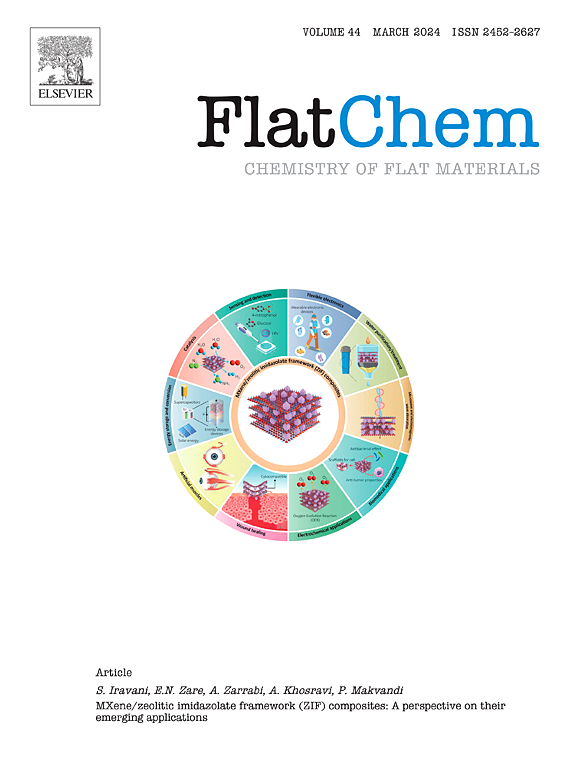Effective photocatalytic behaviour of tungsten disulphide (WS2) with multi and fewer layers for degradation of methylene blue
IF 6.2
3区 材料科学
Q2 CHEMISTRY, PHYSICAL
引用次数: 0
Abstract
The tungsten disulphide nanosheets (WS2) nanosheets have an exceptional ability to degrade hazardous organic pollutants due to strong UV and visible light absorption. Hence, WS2 nanosheets, which exhibited varying layers, were synthesized to study the influence of the number of layers and colour on the photocatalytic degradation of organic pollutants. The synthesized WS2 multi and few-layer layers were systematically characterized to determine structural, morphological, and optical properties. The as-synthesized materials were tested as photocatalysts toward the degradation of methylene blue (MB) as a target pollutant in simulated water. The multi-layered WS2 and few-layered WS2 exhibited strong photocatalytic activity, with 99 % MB degradation efficiency in less than 30 min at pH 10.3. However, the few-layered WS2 demonstrated high stability after the fourth run, with an efficiency of more than 90 % and a decrease of 4 %. It was concluded that few-layered WS2 nanosheets are ideal photocatalyst materials due to the enhanced light absorption, recyclability, and photocatalytic activity in comparison with multi-layered WS2 nanosheets.

多层和少层二硫化钨(WS2)降解亚甲基蓝的有效光催化行为
二硫化钨纳米片具有较强的紫外和可见光吸收能力,对有害有机污染物具有特殊的降解能力。因此,我们合成了不同层数的WS2纳米片,以研究层数和颜色对光催化降解有机污染物的影响。对合成的WS2多层和少层材料进行了系统表征,以确定其结构、形态和光学性质。对合成的材料作为光催化剂对模拟水中亚甲基蓝(MB)的降解效果进行了测试。多层WS2和少层WS2表现出较强的光催化活性,在pH 10.3条件下,在不到30 min的时间内降解MB的效率达到99%。然而,在第四次运行后,少层WS2表现出了很高的稳定性,效率超过90%,下降了4%。结果表明,与多层WS2纳米片相比,多层WS2纳米片具有更好的光吸收性、可回收性和光催化活性,是理想的光催化材料。
本文章由计算机程序翻译,如有差异,请以英文原文为准。
求助全文
约1分钟内获得全文
求助全文
来源期刊

FlatChem
Multiple-
CiteScore
8.40
自引率
6.50%
发文量
104
审稿时长
26 days
期刊介绍:
FlatChem - Chemistry of Flat Materials, a new voice in the community, publishes original and significant, cutting-edge research related to the chemistry of graphene and related 2D & layered materials. The overall aim of the journal is to combine the chemistry and applications of these materials, where the submission of communications, full papers, and concepts should contain chemistry in a materials context, which can be both experimental and/or theoretical. In addition to original research articles, FlatChem also offers reviews, minireviews, highlights and perspectives on the future of this research area with the scientific leaders in fields related to Flat Materials. Topics of interest include, but are not limited to, the following: -Design, synthesis, applications and investigation of graphene, graphene related materials and other 2D & layered materials (for example Silicene, Germanene, Phosphorene, MXenes, Boron nitride, Transition metal dichalcogenides) -Characterization of these materials using all forms of spectroscopy and microscopy techniques -Chemical modification or functionalization and dispersion of these materials, as well as interactions with other materials -Exploring the surface chemistry of these materials for applications in: Sensors or detectors in electrochemical/Lab on a Chip devices, Composite materials, Membranes, Environment technology, Catalysis for energy storage and conversion (for example fuel cells, supercapacitors, batteries, hydrogen storage), Biomedical technology (drug delivery, biosensing, bioimaging)
 求助内容:
求助内容: 应助结果提醒方式:
应助结果提醒方式:


